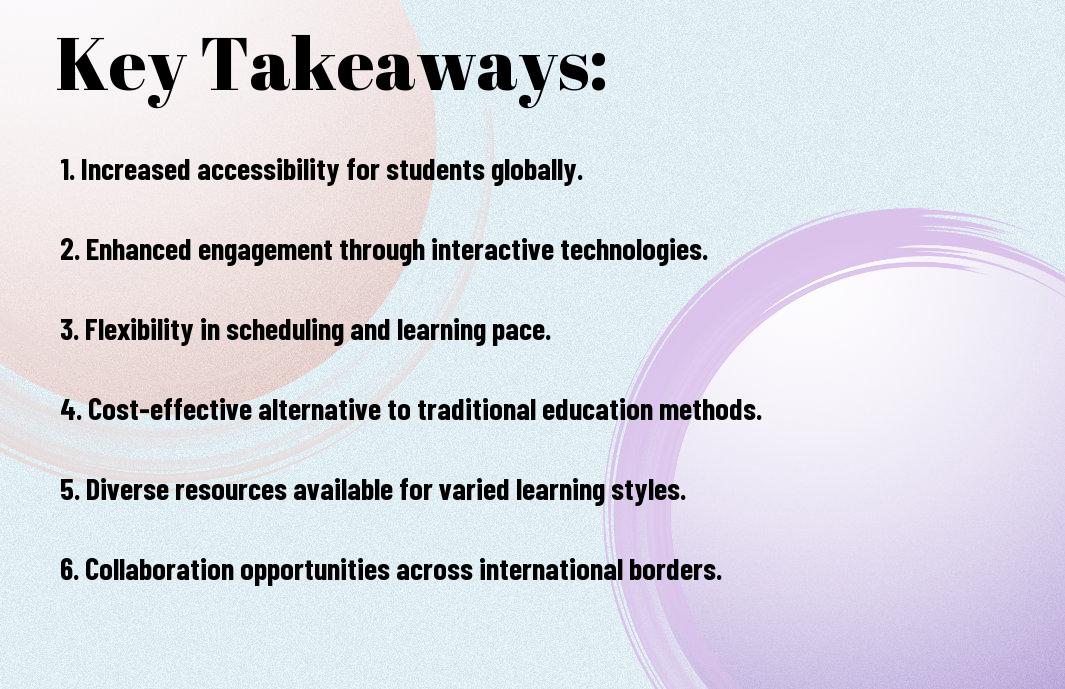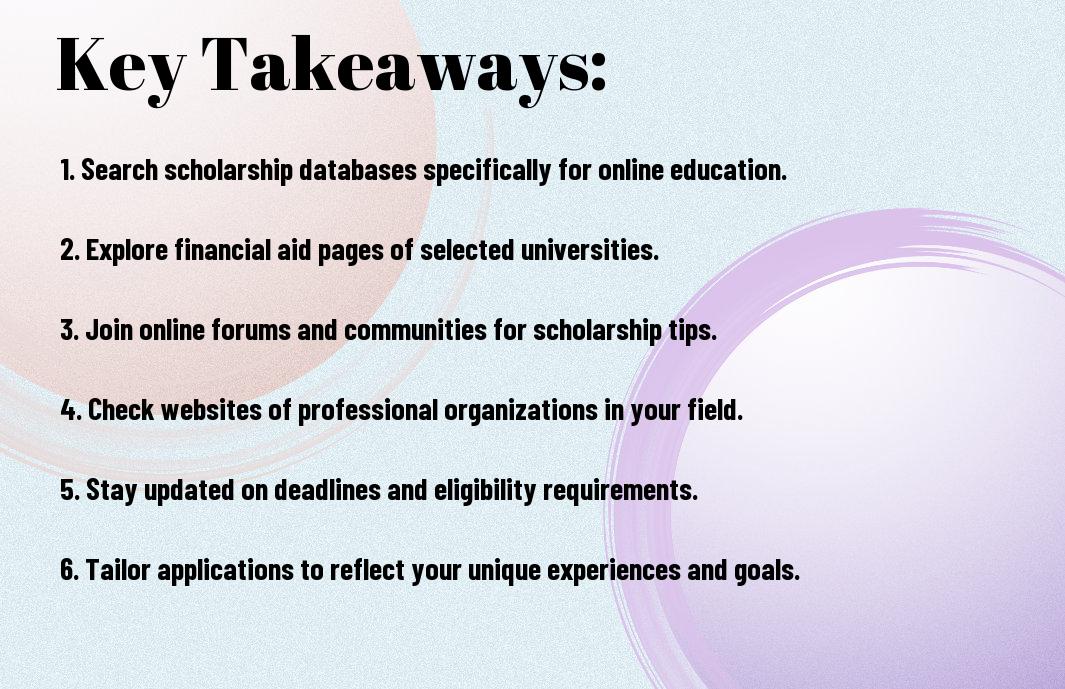- The adoption of virtual classrooms has increased significantly due to advances in technology and the need for flexible learning options, allowing students to access educational resources from anywhere in the world.
- Online learning platforms have made it possible to connect students with expert instructors from diverse backgrounds and locations, promoting global knowledge sharing and cultural exchange.
- The personalization of learning experiences is a key benefit of virtual classrooms, as students can learn at their own pace and engage with interactive content that caters to their individual needs and learning styles.
- Virtual classrooms have also enabled increased accessibility to education for students with disabilities or those living in remote areas, helping to bridge the education gap and promote equal opportunities for all.
- The future of education is likely to be shaped by the continued growth of virtual classrooms, with artificial intelligence and virtual reality playing a major role in enhancing the learning experience and making it more immersive and engaging.
History of Virtual Classrooms
While exploring the concept of virtual classrooms, you’ll discover that their development has been a gradual process, spanning several decades, and influencing your understanding of online learning.
Early Beginnings
Begining with the first instances of distance learning, you find that educators have long sought ways to expand access to education, and your research will reveal that early experiments with virtual classrooms laid the groundwork for modern online learning.
Evolution of Technology
Around the turn of the century, you see that advancements in technology started to pave the way for more sophisticated virtual classrooms, and your observations will show that this period marked a significant shift in the way you approach online education.
And as you research deeper into the evolution of technology, you’ll notice that improvements in internet connectivity, video conferencing tools, and learning management systems have enabled the creation of immersive and interactive virtual learning environments, allowing you to engage with course materials and instructors in a more effective and personalized way.


Benefits of Virtual Classrooms
Any educator or learner can attest to the numerous advantages of virtual classrooms, which have transformed the way you learn and teach, offering flexibility, convenience, and effectiveness that traditional classrooms often cannot match.
Increased Accessibility
Around the globe, you can now access virtual classrooms, allowing you to learn from anywhere, at any time, as long as you have a stable internet connection, making it easier for you to fit learning into your busy schedule.
Personalized Learning
Along with the flexibility, virtual classrooms also provide you with the opportunity to learn at your own pace, allowing you to revisit and review material as many times as you need, which helps to reinforce your understanding of the subject matter.
Increased interaction with virtual learning materials enables you to engage more deeply with the content, and as you progress through your course, you can tailor your learning experience to suit your individual needs, helping you to stay motivated and focused on your goals, and ultimately, achieve your full potential.
Challenges in Implementing Virtual Classrooms
Your journey to implementing virtual classrooms may be hindered by several obstacles, including technical issues and teacher training, as discussed in The Digital Classroom Revolution: Surprising E-Learning Statistics and Trends, which highlights the need for careful planning and execution.
Technical Issues
One of the primary concerns is the reliability of your technology infrastructure, as poor internet connectivity and outdated hardware can disrupt the learning experience, causing frustration for both you and your students.
Teacher Training
Beside the technical aspects, you will also need to consider the training required for your teachers to effectively use virtual classroom tools and engage with students in a digital environment, which can be a significant challenge if not properly addressed.
Issues related to teacher training can be complex, and you will need to invest time and resources to ensure that your teachers are comfortable and confident using virtual classroom technology, which is necessary for a successful implementation, and this may involve providing ongoing support and professional development opportunities to help them adapt to new technologies and pedagogies.
Impact on Student Engagement
Now, as virtual classrooms become more prevalent, you can expect to see a significant shift in how students interact with educational content. This, in turn, affects your overall learning experience, making it more immersive and effective.
Improved Participation
Increased involvement is noticeable, as you find yourself more inclined to participate in discussions and activities, thanks to the comfort and convenience of a virtual setting.
Enhanced Motivation
Among the many benefits, you’ll notice that your motivation levels rise, as virtual classrooms provide a sense of autonomy and flexibility, allowing you to learn at your own pace.
At the heart of enhanced motivation is the ability to personalize your learning experience, which virtual classrooms effortlessly provide, enabling you to focus on areas that interest you the most, thereby increasing your enthusiasm and dedication to learning, and ultimately, leading to better academic outcomes for you.
Global Adoption of Virtual Classrooms
Despite the initial skepticism, virtual classrooms have gained widespread acceptance worldwide. You can learn more about The rise of virtual university creations in education and its impact on the education sector.
Developed Countries
Developing nations aside, you’ll find that developed countries have been at the forefront of adopting virtual classrooms, with many institutions investing heavily in digital infrastructure to support online learning.
Developing Countries
Below the surface of developed nations, you’ll find that developing countries are also embracing virtual classrooms, albeit at a slower pace, due to infrastructure and resource constraints.
Global trends indicate that as technology becomes more accessible, you can expect to see a significant surge in the adoption of virtual classrooms in developing countries, bridging the education gap and increasing access to quality education for your students.
Future of Virtual Classrooms
Once again, you will witness a significant transformation in the way you learn and interact with educators, as virtual classrooms continue to evolve and improve, offering you more personalized and immersive experiences.
Advancements in Technology
Alongside the development of new tools and platforms, you will have access to enhanced features, such as augmented reality and artificial intelligence, that will further enrich your virtual learning environment.
Changing Role of Teachers
Automatically, your instructors will need to adapt to new roles, focusing on guiding and mentoring you, rather than just lecturing, as virtual classrooms become more prevalent and student-centered.
In fact, as you navigate these changes, you will likely find that your teachers are more approachable and supportive, helping you to take ownership of your learning and make the most of the virtual classroom experience, with personalized feedback and real-time assessments that cater to your unique needs and learning style.
Conclusion
Summing up, you have witnessed the significant growth of virtual classrooms worldwide, transforming your learning experience. As you explore this new landscape, your access to global educational resources expands, allowing you to connect with peers and instructors from diverse backgrounds. Your ability to learn from anywhere, at any time, has become a reality, and you can expect continued innovation in virtual classrooms to shape your future educational pursuits.
FAQ
Q: What are the main factors driving the rise of virtual classrooms worldwide?
A: The main factors driving the rise of virtual classrooms worldwide include advancements in technology, increased access to high-speed internet, and the growing demand for flexible and accessible education. Additionally, the COVID-19 pandemic has accelerated the adoption of virtual classrooms, as many educational institutions were forced to shift to online learning to ensure continuity. The benefits of virtual classrooms, such as reduced costs, increased reach, and personalized learning experiences, have also contributed to their growing popularity.
Q: How do virtual classrooms enhance the learning experience for students?
A: Virtual classrooms enhance the learning experience for students in several ways. They provide access to high-quality educational resources and materials, allowing students to learn at their own pace and on their own schedule. Virtual classrooms also enable students to interact with instructors and peers from diverse backgrounds, fostering global connections and collaborations. Moreover, virtual classrooms often incorporate interactive and immersive technologies, such as virtual reality and gamification, which can increase student engagement and motivation. Overall, virtual classrooms offer a flexible, accessible, and engaging learning environment that can cater to different learning styles and needs.
Q: What are the potential challenges and limitations of virtual classrooms, and how can they be addressed?
A: The potential challenges and limitations of virtual classrooms include technical issues, such as connectivity problems and equipment failures, as well as social and emotional challenges, such as feelings of isolation and disconnection. To address these challenges, educational institutions can invest in reliable technology and provide technical support, as well as implement strategies to foster social connection and community-building, such as virtual discussion forums and social events. Additionally, instructors can use pedagogical approaches that promote interactive and collaborative learning, and provide regular feedback and support to students. By acknowledging and addressing these challenges, virtual classrooms can be designed to provide a high-quality and inclusive learning experience for all students.












